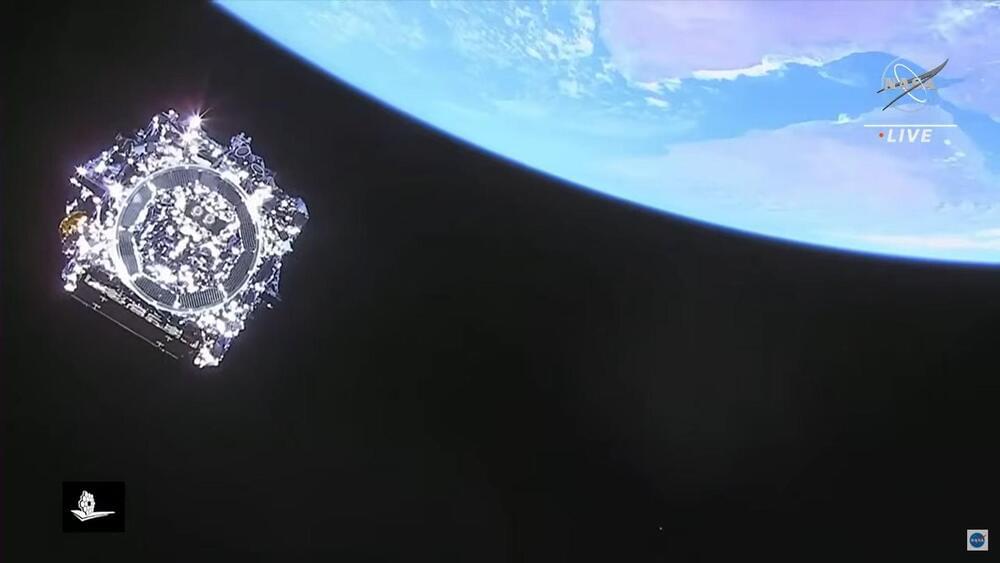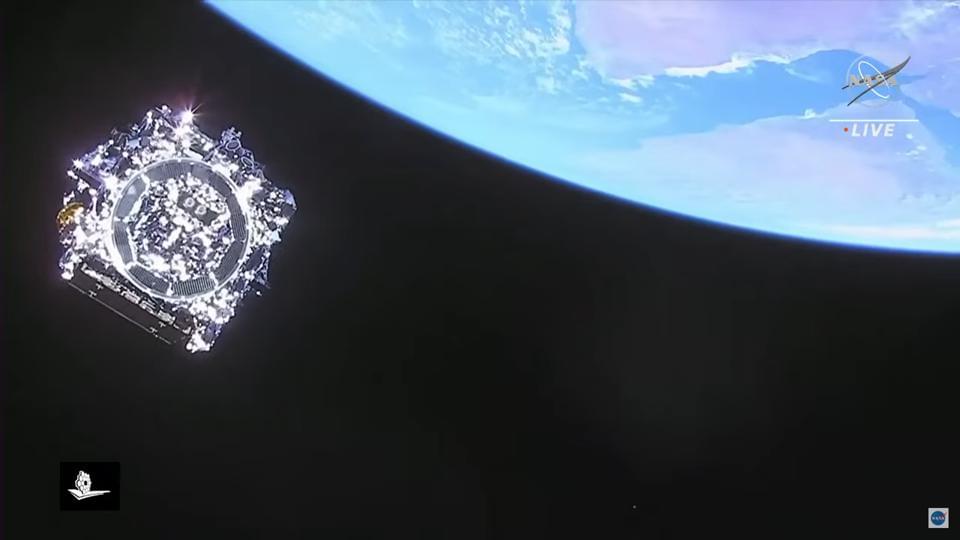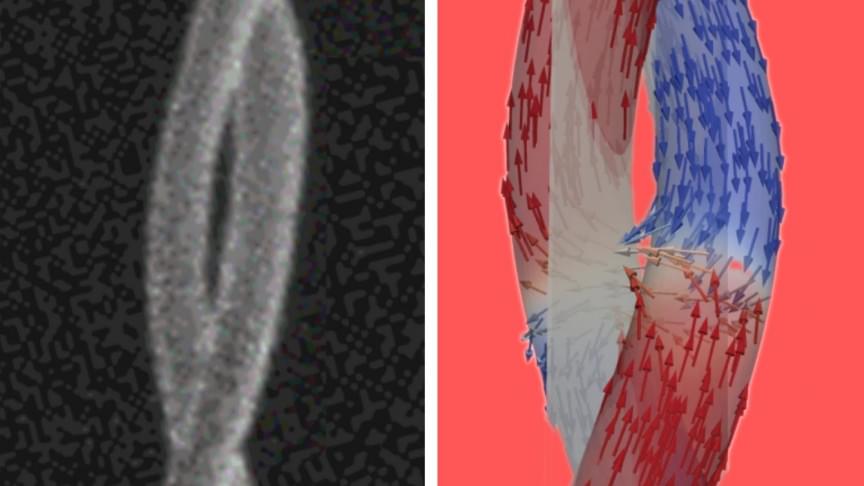It’s really happening. After all the years of delays, reschedulings, budget shortfalls, and even more delays, the James Webb Space Telescope (JWST) launched on December 25 and is now successfully on its way to is destination at the second LaGrange point (L2), about 1.5 million km (1 million miles) from Earth.
If you celebrate Christmas and are astronomically inclined, the launch feels like a true Christmas miracle.
The footage of JWST’s separation from the Ariane 5 rocket, as seen from a camera on the rocket’s second stage is just absolutely stunning.






